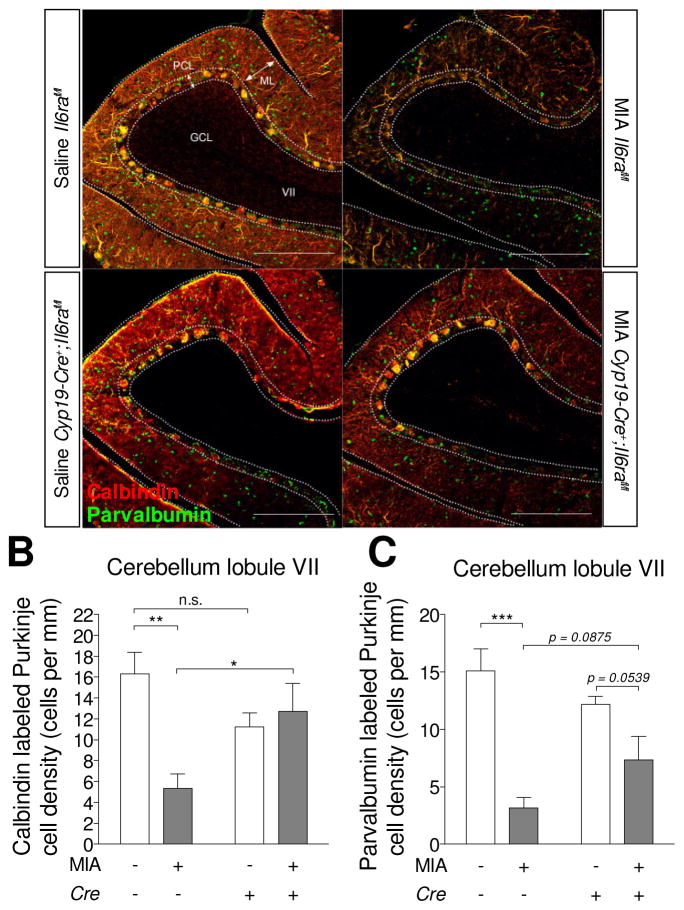Fig. 4.
Deletion of placental trophoblast Il6ra prevents cerebellar neuropathology and behavioral abnormalities in MIA offspring. (A) Representative images of calbindin and parvalbumin immunofluorescence staining in the offspring adult brain. Cerebellar Purkinje cells are labeled by calbindin (red) and co-stained for parvalbumin (green). Scale bar = 200 μm. Quantification of (B) calbindin+ and (C) parvalbumin+ Purkinje cell density at cerebellar lobule VII (Calbindin- MIA: F(1,8) = 24.14, p = 0.0410; Cre: F(1,8) = 1.392, p = 0.5752; MIAxCre: F(1,8) = 41.85, p = 0.0126; Post hoc- Saline v.s. MIA: Cre− p =0.0040, Cre+ p = 0.6008; Cre− v.s. Cre+: Saline p = 0.1012, MIA p = 0.0280)(Parvalbumin- MIA: F(1,8) = 30.45, p = 0.0006; Cre: F(1,8) = 0.1830, p = 0.6801; MIAxCre: F(1,8) = 5.403, p = 0.0486; Post hoc- Saline v.s. MIA: Cre− p = 0.0005, Cre+ p = 0.0539; Cre− v.s. Cre+: Saline p = 0.2167, MIA p = 0.0875). All groups n = 3 litters (1–2 offspring per group) (Two-way ANOVA with Fisher’s LSD post-hoc test). * p < 0.05, ** p < 0.01, *** p < 0.001 between groups (Data are presented as mean ± SEM. ML: molecular layer, GCL: granule cell layer, PCL: Purkinje cell layer. n.s.: not significant.

